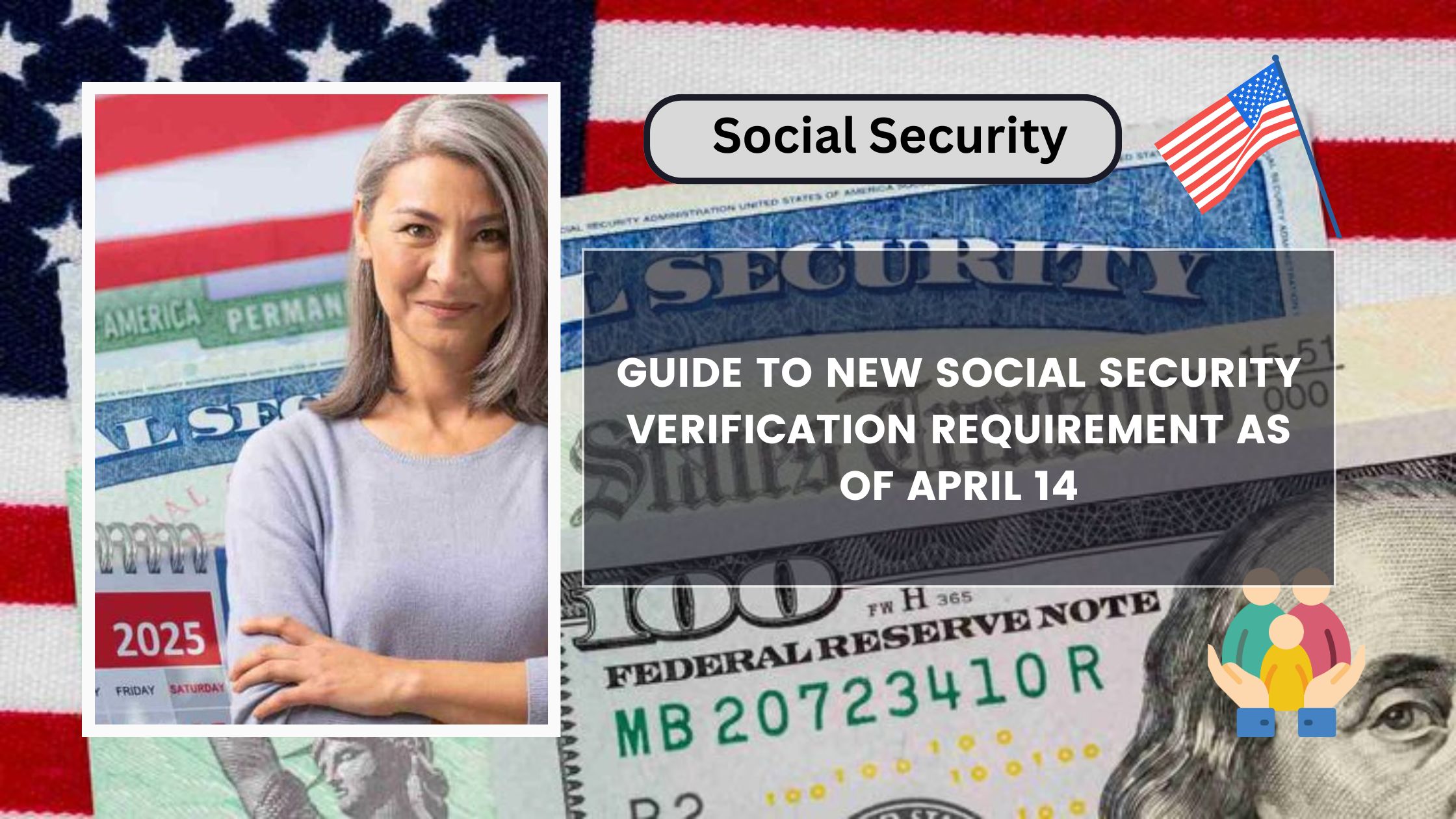Starting April 14, 2025, the U.S. government made a big change to how Social Security Numbers (SSNs) are verified. If you’re starting a new job, applying for benefits, or dealing with financial paperwork, you might need to go through a new process. This guide explains everything clearly—no hard words, no confusing steps—just what you need to know in simple English.
What is Social Security Verification?
Social Security verification means checking if a person’s SSN (Social Security Number) is real and belongs to them. This helps stop fraud, protect people’s identities, and make sure benefits go to the right people.
What Changed on April 14?
Starting April 14, 2025, the Social Security Administration (SSA) added a new step. Now, employers and other organizations must use a new online system to verify your SSN.
This change is meant to:
- Speed up the process
- Make fewer mistakes
- Stop fake SSNs from being used
How the New Online System Works
The system is called the Electronic Consent Based Social Security Number Verification (eCBSV). Here’s how it works in simple steps:
- You give written or electronic permission to the company or agency.
- The company sends your name, date of birth, and SSN to the SSA.
- The SSA checks if the number matches your name and date of birth.
- The result is sent back as either:
- Yes, it matches, or
- No, it doesn’t match
That’s it! It’s safe and quick.
Why Is This Important?
This new rule helps:
- Catch fake identities
- Stop identity theft
- Protect your benefits
- Make hiring and applying for services faster and easier
Who Will Use This System?
This is mostly for:
- Employers
- Banks
- Credit unions
- Government agencies
- Background check services
They’ll need your permission before checking anything.
Do You Have to Sign Up?
No. You don’t have to sign up. If a company or agency needs to check your SSN, they will ask you for permission. You just need to agree or not.
What Kind of Consent is Needed?
You can give your okay in two ways:
- On paper (like a form)
- Online (by clicking a box or signing digitally)
Without your consent, the company cannot verify your SSN using this system.
What If You Say No?
You can refuse, but:
- It might delay your job application
- You might not get some services right away
- The company may not be able to finish your paperwork
Is Your Information Safe?
Yes. The SSA has strong privacy rules. Your information is only shared with the company you gave permission to. It is not stored or reused.
How Long Does It Take?
Most verifications happen within seconds. It’s very fast and helps companies know quickly if they can move forward.
Will This Affect Job Applications?
Yes, especially if:
- You’re getting a job for the first time
- You’re changing jobs
- You’re working with a government or financial institution
Expect to be asked for your permission to verify your SSN.
Is This the Same as E-Verify?
Not exactly. E-Verify is used by employers to check if you’re allowed to work in the U.S. The new eCBSV system is only for checking if your SSN is real and correct. They are different tools but may both be used.
Is This Only for Citizens?
No. Anyone with an SSN—including green card holders or others with legal work authorization—may need to go through this process. It’s not about immigration status, just about verifying identity.
What About Minors or Students?
If you’re under 18 and applying for benefits or services, your parents or guardians may need to give permission for SSN verification. Schools and banks might also use the system if you’re opening an account.
What About Seniors?
Seniors may be asked for SSN verification when applying for Medicare, Social Security benefits, or any government service that requires your identity to be confirmed.
Will This Affect Me Personally?
Only if:
- You are applying for a job or bank account
- You’re applying for government services
- You’ve given your SSN to a business or agency recently
If you’re not doing any of that, you may not notice a change.
Conclusion
The new Social Security verification rule that started on April 14 is all about making identity checks faster, safer, and more accurate. It protects people from fraud and makes sure that benefits and services reach the right hands. You don’t need to sign up or do anything unless you’re asked for permission. When that happens, now you’ll know exactly what it means and how it works.
This change is a big step toward better online safety and smoother services in jobs, banking, and government systems.

